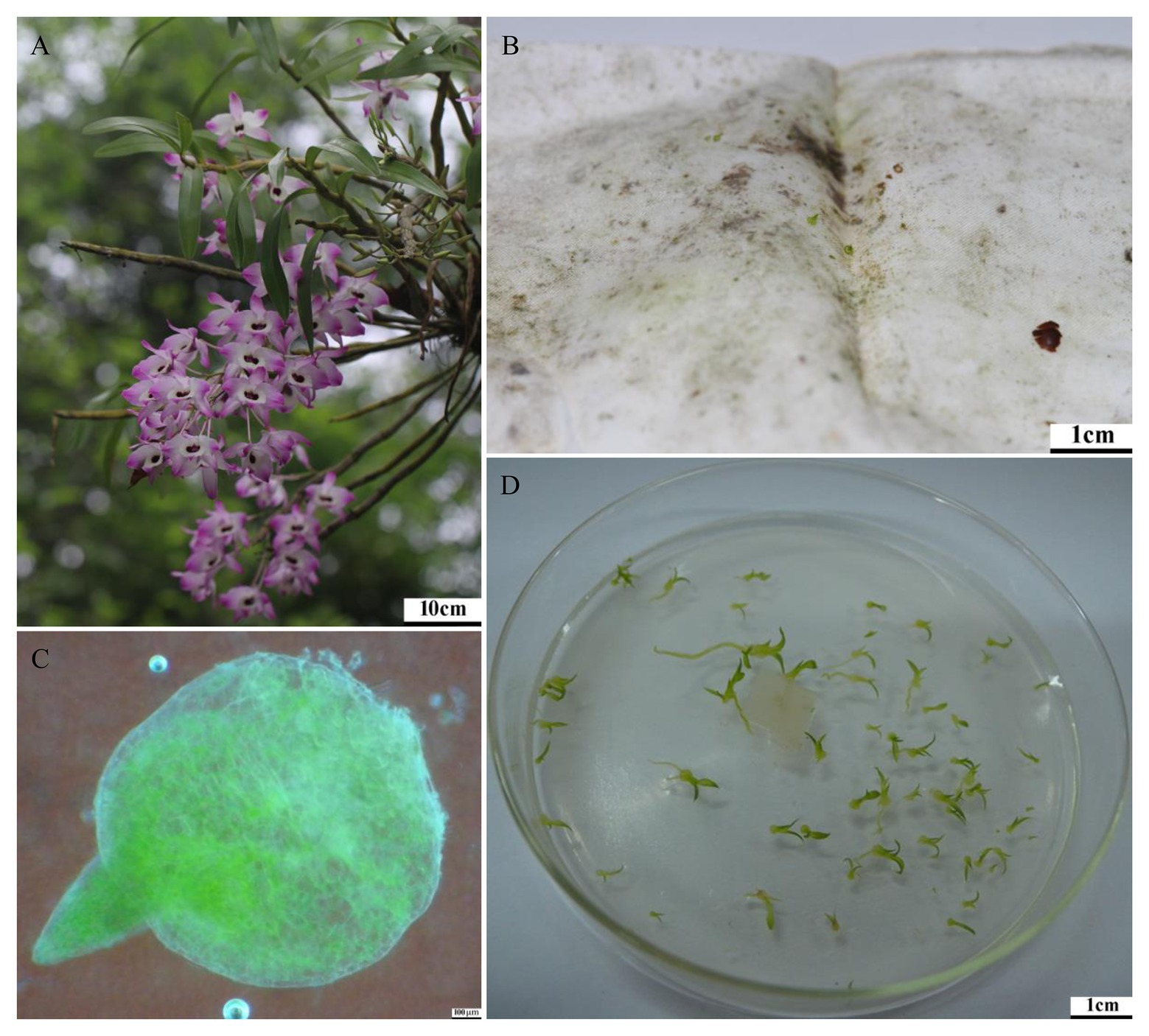Orchids are highly dependent on mycorrhizal fungi for seed germination and subsequent growth to a seedling as they provide essential carbon, water, and mineral nutrients to developing seeds. Although there is mounting evidence that orchid seeds are often colonized by multiple fungi simultaneously, most in vitro germination experiments focus on mycorrhizal monocultures and little is known about how mycorrhizal assemblages affect seed germination and growth of seedlings.
In a study published in Frontiers in Plant Science, researchers from Xishuangbanna Tropical Botanical Garden (XTBG) investigated the effect of mycorrhizal assemblages on seed germination and seedling formation in the epiphytic orchid Dendrobium nobile.
The researchers compared protocom formation and seedling establishment under two different light conditions between monocultures and co-cultures of fungal strains isolated from protocorms of D. nobile in the field.
In situ baiting using seed packets wrapped in cling film secured ample protocorm formation in the field and allowed successful isolation of mycorrhizal fungi. In total, five fungal strains (JC-01, JC-02, JC-03,JC-04, and JC-05)were isolated from protocorms of D. nobile, indicating that the species was not highly specific to its fungal partners.
All fungi were capable of initiating seedling formation, but large differences were observed between fungal strains. The strains JC-01 and JC-03 were most effective in facilitating seedling development and produced the largest numbers of seedlings with two leaves. In addition, these strains initiated seed germination earlier in time than the other strains did.
In vitro germination experiments showed that germination percentages were higher under light-dark conditions than under complete dark conditions, supporting previous findings that light facilitates germination in epiphytic orchids.
Therefore, both fungal strains show potential for mass seedling propagation and application in conservation and reintroduction programs. Co-cultures of mycorrhizal strains did not increase seedling formation and in some cases even led to lower germination success.
The results demonstrate that effects of fungal assemblages are not predictable from those of component species, and that more work is needed to better understand the role of fungal assemblages determining seed germination and subsequent growth under natural conditions.
Contact
SHAO Shicheng Ph.D
Department of Gardening and Horticulture, Xishuangbanna Tropical Botanical Garden, Chinese Academy of Sciences, Menglun, Mengla, Yunnan 666303, China
Inflorescence and protocorms induced by in situ baiting of Dendrobium nobile in Paozhuqing (China).

